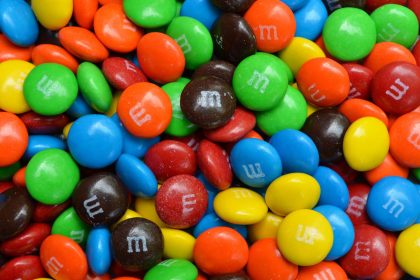A unique selling proposition (USP) is a statement that tells potential customers what makes your product or service different from your competitors and what makes your business a better choice among competitors. It’s one of the most important elements of your brand identity.

Here are a few popular USPs that we are all familiar with:
FedEx: “When it absolutely, positively has to be there overnight.”
M&M’s: “The milk chocolate melts in your mouth, not in your hand.”
Disney World: “The happiest place on earth.”
Like these, your USP should be clear, concise, and memorable. Your USP is the foundation of your branding strategy. It’s the starting point for all of your marketing and advertising efforts. Everything else should support and reinforce your USP. If you don’t have a USP, now is the time to create one.
How Do You Write a Unique Selling Proposition?
1. Identify your target audience
The first step is to identify your target market. Who are you trying to reach with your product or service? What are their needs and wants? What are their demographics? What motivates them? What are their buying habits? Take our M&M’s example; most candy is consumed by adults not kids. And young adults (18-24), not older adults.
2. Jot down the problem your product solves
The people want products that will make their lives easier, better, save them money, or both.
3. List what benefits set you apart
Take a look at your competition. What are they doing that you’re not? How can you set yourself apart from them? This is where your USP comes in.
Your USP should be something that your competition doesn’t offer. It should be a benefit that your target market wants or needs. And it should be something that you can deliver on.
4. Clearly define your promise
“We are going to get your important business information to the client by tomorrow.”
“The milk chocolate will not get all over your Ed Hardy graphic tee.”
“Your kids will love you if you bring them to Disney World.”
5. Condense it in one sentence
An ideal USP should be no longer than one or two sentences. Keep it short and sweet, like M&M’s.
Uncover your USP and use it to power up your sales
Put yourself in your customer’s shoes. Too often, entrepreneurs fall in love with their product or service and forget that it is the customer’s needs, not their own, that they must satisfy. Step back from your daily operations and carefully scrutinize what your customers really want.
Suppose you own a pizza parlor. Sure, customers come into your pizza place for food. But is food all they want? What could make them come back again and again and ignore your competition? The answer might be quality, convenience, reliability, friendliness, cleanliness, courtesy or customer service.
Remember, price is never the only reason people buy. If your competition is beating you on pricing because they are larger, you have to find another sales feature that addresses the customer’s needs and then build your sales and promotional efforts around that feature.
Know what motivates your customers’ behavior and buying decisions. Effective marketing requires you to be an amateur psychologist. You need to know what drives and motivates customers. Go beyond the traditional customer demographics, such as age, gender, race, income and geographic location, that most businesses collect to analyze their sales trends. For our pizza shop example, it is not enough to know that 75 percent of your customers are in the 18-to-25 age range. You need to look at their motives for buying pizza-taste, peer pressure, convenience and so on.
Cosmetics and liquor companies are great examples of industries that know the value of psychologically oriented promotion. People buy these products based on their desires (luxury, glamour and so on), not on their needs.
Uncover the real reasons customers buy your product instead of a competitor’s. As your business grows, you’ll be able to ask your best source of information: your customers. For example, the pizza entrepreneur could ask them why they like his pizza over others, plus ask them to rate the importance of the features he offers, such as taste, size, ingredients, atmosphere and service. You will be surprised how honest people are when you ask how you can improve your service.
Incorporate Your USP
Once you’ve identified your USP, it’s time to start using it. Incorporate it into all of your marketing and advertising materials. Make sure it’s prominently displayed on your website and in your store.
Make sure everyone in your company is aware of your USP and is using it in their day-to-day interactions with customers. Your USP should be reflected in everything you do, from the way you answer the phone to the way you package your products. It should be the foundation of your customer service strategy. It should be at the heart of your branding efforts.
Your USP is the cornerstone of your marketing efforts, and it should be given the attention it deserves. Evaluate it regularly to ensure it’s keeping up with changes in your industry and your business. Even the major brands change their USPs from time to time.
At New Target, we are experts at branding companies and helping them set themselves apart from the competition. We are happy to help you get started.



